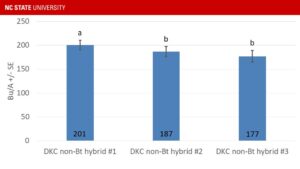
Non-Bt Hybrid Performance in the OVT
I’ve written previously about why North Carolina corn growers should feel comfortable planting non-Bt refuge corn, but the performance …



El inglés es el idioma de control de esta página. En la medida en que haya algún conflicto entre la traducción al inglés y la traducción, el inglés prevalece.
Al hacer clic en el enlace de traducción se activa un servicio de traducción gratuito para convertir la página al español. Al igual que con cualquier traducción por Internet, la conversión no es sensible al contexto y puede que no traduzca el texto en su significado original. NC State Extension no garantiza la exactitud del texto traducido. Por favor, tenga en cuenta que algunas aplicaciones y/o servicios pueden no funcionar como se espera cuando se traducen.
Inglês é o idioma de controle desta página. Na medida que haja algum conflito entre o texto original em Inglês e a tradução, o Inglês prevalece.
Ao clicar no link de tradução, um serviço gratuito de tradução será ativado para converter a página para o Português. Como em qualquer tradução pela internet, a conversão não é sensivel ao contexto e pode não ocorrer a tradução para o significado orginal. O serviço de Extensão da Carolina do Norte (NC State Extension) não garante a exatidão do texto traduzido. Por favor, observe que algumas funções ou serviços podem não funcionar como esperado após a tradução.
English is the controlling language of this page. To the extent there is any conflict between the English text and the translation, English controls.
Clicking on the translation link activates a free translation service to convert the page to Spanish. As with any Internet translation, the conversion is not context-sensitive and may not translate the text to its original meaning. NC State Extension does not guarantee the accuracy of the translated text. Please note that some applications and/or services may not function as expected when translated.
Collapse ▲
I’ve written previously about why North Carolina corn growers should feel comfortable planting non-Bt refuge corn, but the performance …

In addition to yield, fiber quality is an important component to the value and marketability of cotton in our …
Keith Edmisten, Michael Phillips and Guy Collins, Crop & Soil Sciences, NCSU The preliminary yield results from the 2022 cotton …
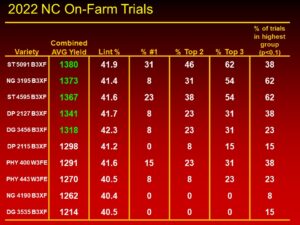
Like most years in North Carolina, 2022 was certainly unique and brought its share of challenges. Dry, hot weather …
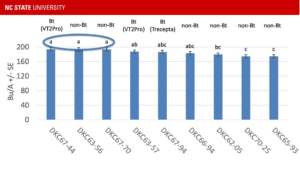
Bt corn has been genetically modified to make insecticidal proteins that protect plants from caterpillars and some root-feeding beetles. …
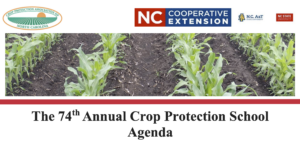
The 74th Annual Crop Protection School will be held virtually on Thursday, December 1, 2022 using the Zoom platform. Please …
Harvest is largely underway for most of NC and most of our crop has already been defoliated. For the …
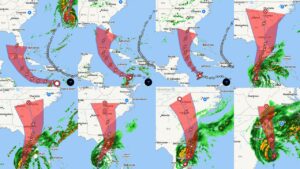
The dreaded storm is upon us. By tomorrow morning, we should all know what the impact on our crop …
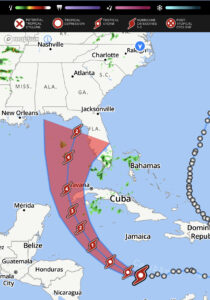
We were really hoping to avoid having to write an article like this. I think everyone breathes a sigh …
There’s been several calls this week about adjusting rates and tankmixtures due to recent high temperatures and rightfully so. …
We’ve recently concluded our defoliation meetings across the state. Below are a few highlights of those meetings and subsequent …
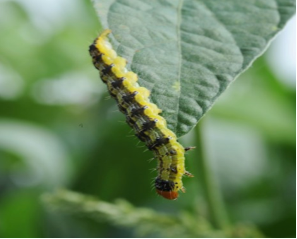
Whether you call it corn earworm, soybean pod worm, or cotton bollworm, the caterpillar life stage of this insect …
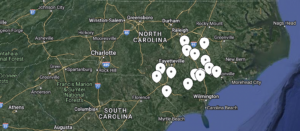
The Southeast Extension District is conducting a variety of research trials this year to provide unbiased agricultural research that …
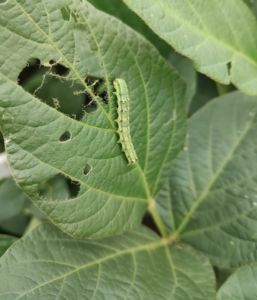
During scouting visits for NC State Cooperative Extension on farm soybean trials we found multiple pests in the same …
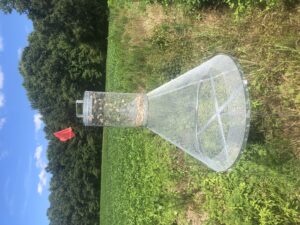
Article by D. Reisig and A. Huseth Light trap catches for bollworm (also known as corn earworm) are up this …
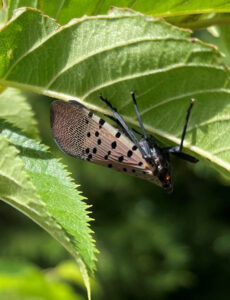
The short answer: We do not anticipate that spotted lanternfly will be an issue for field crops The long answer: …
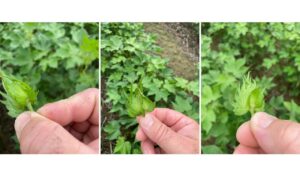
We have observed multiple cases of 4-bract squares in NC cotton over the past few days. 4-bract squares are …
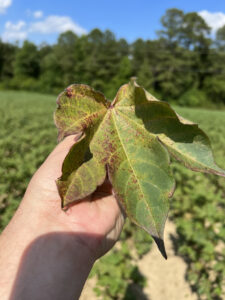
With hot, dry sustained weather across the state, odd issues are showing up. A couple weeks ago, we had …
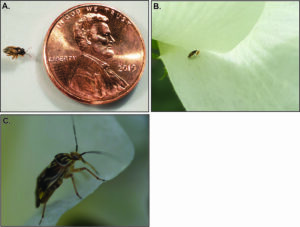
Cotton is squaring and moving toward bloom across the state, which means it’s time to plan for mid- to …
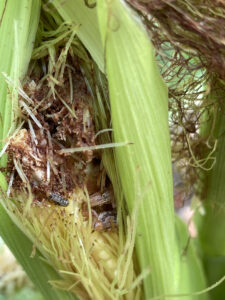
Corn earworm (aka bollworm, podworm, tomato fruitworm) populations are much higher in corn than usual. Corn is a nursery …
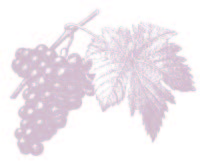
Grapevines require 16 essential nutrients for normal growth and development (Table 9.1). Carbon, hydrogen, and …
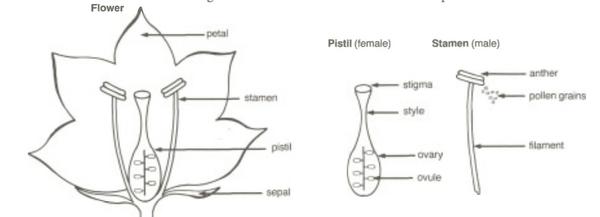
This guide presents basic facts about seeds, including how they develop, how to store and …
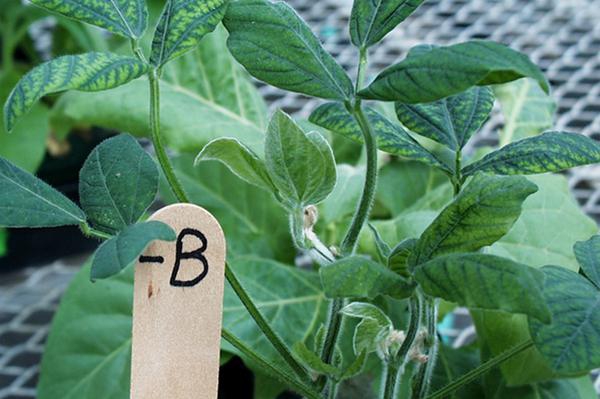
This Soybean Nutrient Deficiency Information factsheet describes the symptoms and management of boron deficiency in …
This Soybean Nutrient Deficiency Information factsheet describes the symptoms and management of zinc deficiency in …

This Soybean Nutrient Deficiency Information factsheet describes the symptoms and management of molybdenum deficiency in …
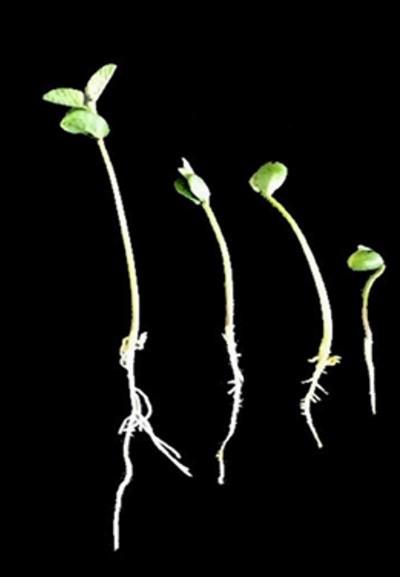
This Soybean Nutrient Deficiency Information factsheet describes the symptoms and management of aluminum toxicity in …
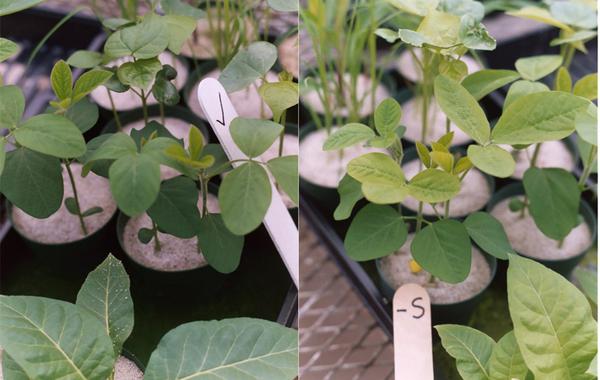
This Soybean Nutrient Deficiency Information factsheet describes the symptoms and management of sulfur deficiency in …

This Soybean Nutrient Deficiency Information factsheet describes the symptoms and management of magnesium deficiency in …